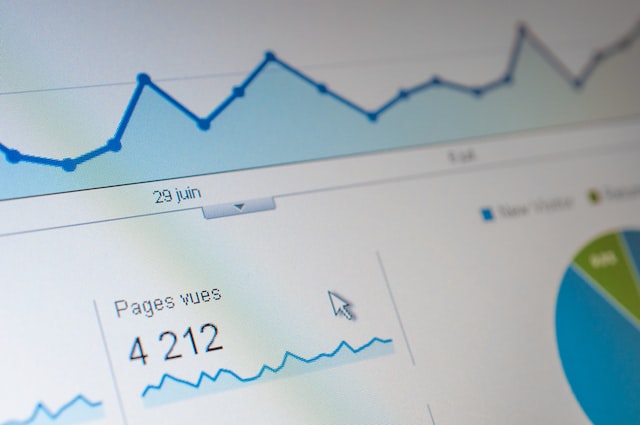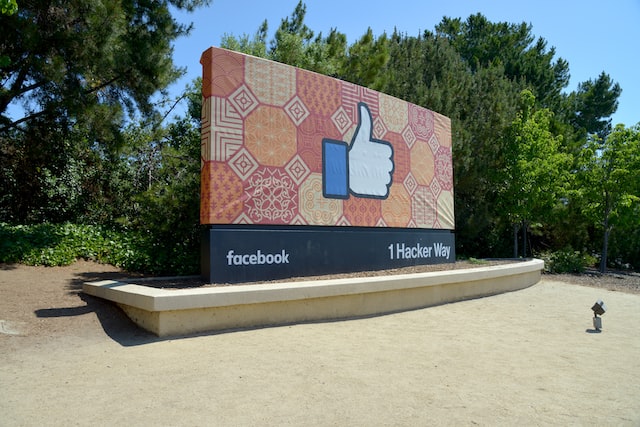Big Tech owes you money. Find out how much
The view of data in general and personal data in particular as a valuable resource is slowly gaining acceptance. The notion that data is the “new gold” has already spurred a wave of data protection laws, including the General Data Protection Regulation (EU GDPR) — the toughest privacy and security law in the world, and California Privacy Act. The issue of privacy protection and data sharing has entered the spotlight. More than half Americans (57%) and Britons (56%) are now worried about data privacy when going online. As they should be. Despite all attempts to rein them in, tech giants that slurp up personal data and repurpose it as they please are making more money than ever.
Data is money, but how much money?
Big Tech is making big bucks by selling users’ attention. In 2020, Google’s parent company, Alphabet, generated $183 billion in revenue. Over 80% of these came from online ads. A year later, when the global economy was still reeling from the pandemic-induced slump, Google continued to thrive, reporting a 41% increase in revenue to $257 billion. Google ads (both in search and on YouTube) accounted for $209.4 billion of that. Facebook is smashing records too. Last year, Meta passed the $100 billion milestone for the first time, earning $118 billion. A staggering $115 billion of that was due to ads.
These numbers could send anyone’s head spinning, but it’s difficult to gauge just how much an individual user’s data is worth. It’s true that data is not tangible and often scattered all over the place, making it hard to put a price tag on it. But the data economy is subject to the same rules of supply and demand. With one big caveat: users are supplying their data for free, for the dubious privilege of using tech companies’ services. But is this barter fair and aren’t we actually trading land for glass beads?
You can cash in on your data
There’s an old saying that “something is only worth what someone is willing to pay for it.” It may not ring true for everybody, but even selling something at what you think is below cost is perhaps better than giving it out for free. Especially, if the act of selling does not demand any of your time or effort.
In our attempt to find the real value of personal data, let’s take a quick look at the services that already allow users to monetize it. These services promise passive income in exchange for access to users’ health data, shopping and browsing history. Tastes they have for data may differ, but they all operate under the same premise — personal data is worth something rather than nothing.
The data they ‘buy’ is used for marketing research and targeted advertising, while ‘sellers’ are compensated with gift cards, discounts and cash.

Photo: Carlos Muza/Unsplash
‘Health tracking platform’ Evidation pays users “for steps, sleep, surveys or more” once they connect to the platform. Evidation claims that it would ask consent “every time” the data is requested. By granting that request users give the company and its partners a permission to track them on different devices and target them with ads. Users earn money by receiving points. They can earn up to 80 points a day “for each tracked variable activity” such as running, and 6 points for “each fixed activity” such as logging food or tweeting about health. Users can only cash out after scoring 10,000 “points” which translates to $10.
One of the world’s leading marketing research firms, Nielsen, pays up to $50 in reward points per year for installing its app or computer software. The reward can be cashed out or redeemed through gift cards. Nielsen collects three categories of information, referred to as ‘demographic data’ (age, job), ‘behavior data’ (online activity) and ‘preference data’ (favorite content). The firm can share this data with third parties, including Facebook, Google, and Roku TV, unless you specifically opt out.
The amount of money you can earn can by effectively doing nothing also depends on how much data you are ready to share — and, unsurprisingly, more data means more money. For example, those who have downloaded the Monetha app can earn points while shopping by granting “selected” partner stores access to their profile information. The size of the reward depends on how much money shoppers spend as well as on how complete their profiles are.
Not all the services are transparent about how much money you can make by taking advantage of them. Honeygain, which enables users to share their traffic in return for money, says that average payout sum may depend on many factors and vary from country to country. In 2021, it ranged from $23 (France, Turkey) to $48 (Denmark), with the biggest one-time payout being $9,401.
It does not stop with apps. A Chrome extension called Lazybucks pays users for “renting out” their Facebook accounts to advertisers. The only thing the user should do is to link the account to the extension. There is no cap on how much one can earn this way, but there is also a dark underderside: advertisers can fire misleading ads, promote some illegal stuff or break other rules. You never know.
Some of more advanced solutions are still work-in-progress. LetAlone, a company founded by privacy enthusiasts, wants people to wrestle back control over their personal data from tech giants. It will be launching a free app that allows consumers to share their data “through a decentralized data wallet”. LetAlone expects users to earn $450 a year on average from their data.
Empire strikes back

Photo: Greg Bulla/Unsplash
If you think that some of these passive income ‘opportunities’ may not go down well with social media behemoths that collect and milk personal data but without paying users a dime, then you’re right. While it's unlikely that these apps and extensions will ever make a big dent in Big Tech’s earnings (at least in the near future), their modus operandi still puts them on a collision course with tech giants. In the case of UpVoice, a Chrome get-paid-to data-harvesting extension, it came to a showdown.
UpVoice used to say that its “panelists” would be able to earn $75 or more per year just by spending time on Facebook, LinkedIn, Twitter, Amazon, and YouTube. The extension collected the data on ads its “panelists” saw, and in return gave them points that could be exchanged for gift cards. The scheme was indeed working until the company behind UpVoice — BrandTotal — was sued by Facebook for “deceptive data collection” (!). Shortly after losing a protracted legal battle with the tech giant, UpVoice shut down. BrandTotal argued that Facebook was just trying to cling on to its ad monopoly by taking it to court, but the judge sided with Meta. Quod licet Iovi, non licet bovi, or what is permissible for Jupiter is not permissible for cows, apparently.
While it might be tempting to sell your data, we would not recommend doing that. Although these services style themselves as privacy-focused, they collect just too much data to be trustworthy.
Let’s math

Photo: iSawRed/Unsplash
As we could see, estimates by different companies of how much your data is worth differ. Moreover, the data they seek also differ. So, it seems we have hardly moved an inch in our attempt to find out the value of a single user’s data. Perhaps, it’s the time to put some basic arithmetic to work.
Remember the ill-fated Elon Musk’s deal with Twitter? Since 89% of Twitter’s 2021 revenue stemmed from advertising ($4.5 billion out of $5 billion), it’s safe to assume that the amount of money Twitter makes largely depends on the number of monetizable daily active users (mDAU) it has. Why it was so important for Musk to know the exact proportion of spam bots on Twitter is that because you can’t sell to bots, their “personal” data is not monetizable!
The prices charged by Twitter for ad services hinge on the number of users that can be exposed to ads. It may be a very crude estimate, but let’s say that we believe Twitter and that it indeed had 214 million mDAU in Q4 of 2021. Twitter earned $1.413 billion solely from ads during that time, which means that each user brought in $7 a quarter, and about $30 a year.
Musk, for his part, offered to buy the social networking platform for $44 billion cash in April, when Twitter had 229 million mDAU. It means that if the deal had come through, Musk would have paid about $190 for each of Twitter’s unique humans. Do take these calculations with a grain of salt, as it is only an approximation.
Let’s also take a closer look at Meta, a parent company for Facebook, Instagram, Messenger and WhatsApp. Facebook’s monthly active users stood at 2.9 billion in December 2021, while its ad revenue for the whole year came in at $114.9 billion. If we discount the fact that the number of users varies throughout the year, we can conclude that a single user’s data brings in Meta about $39 a year.
YouTube’s ad revenue ballooned to $28.8 billion in 2021, almost doubling. It is estimated that over 2.6 billion users visit YouTube at least once a month. Thus each brings YouTube $11 on average.
$30 or even $80 does not seem like a whole lot of money, does it? It’s worth keeping in mind that Twitter, Facebook and YouTube are not alone in this trade. An average person keeps about 8 social media accounts, and if we take a young tech-savvy individual, then the number is probably even higher. Multiply $30 by, say, 10 and you’ll have $300 a year. So the more accounts people have, the more data they give up for free, helping to drive the adtech’s already huge profits through the roof.
Still does not look like a fortune? Well, it depends… Moreover, so far we have attempted to estimate the amount of revenue per user, ignoring the money the tech giants spend to support their massive ad infrastructure. These expenses are taken out before the net income is calculated. For example, along with the increase in ad revenue, Alphabet also reported an increase in cost of revenue and operating expenses, which together reached $178.9 billion in 2021. Operating expenses include research and development, compensation for marketing and support staff, legal expenses etc. Cost of revenues features “amounts paid to Google Network partners primarily for ads displayed on their properties,” as well as expenses related to data centers and content acquisition.
That means that for tech giants themselves a single user’s data may cost way more than we’ve estimated.
You can’t touch it, but it’s real
Some personal data may not mean much to us the moment we share it, but it carries considerable value. As soon as we pour it on social media, it will be repackaged into a product and put on the data market. The difference with the actual markeplace is, however, that we, the original owners of that data, have no control over what happens to it and get no compensation.
Privacy laws aimed at curbing the overreaching power of ad tech have helped the situation, but not by a lot — tech platforms are constantly coming up with new ways of tracking and ad personalization. They are also making sure users have no clue that they are being tracked so that the thought of opting out would not even cross their minds.
In essence, our data is becoming a commodity without our explicit knowledge and often against our wishes. It might be a bit of a strech, but we can compare it to being robbed in plain sight. But the presumptive victims — social media users — don’t go to the police, they accept this state of things as a status quo. Perhaps, it’s time we challenge it.










































